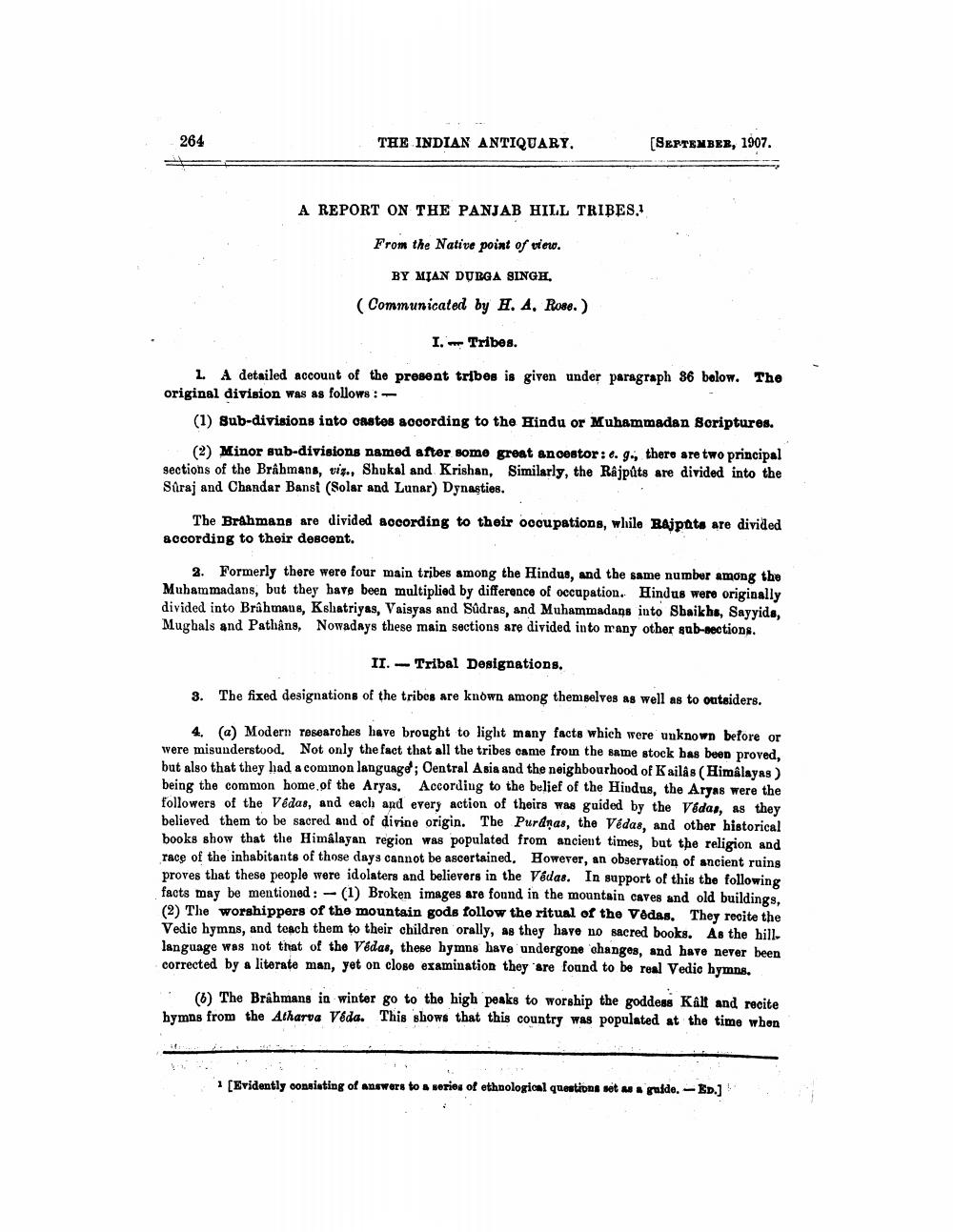________________
264
THE INDIAN ANTIQUARY,
[SEPTEMBER, 1907.
A REPORT ON THE PANJAB HILL TRIBES.
From the Native point of view.
BY MIAN DURGA SINGH. ( Communicated by H. A. Rose.)
I.
Tribes.
1. A detailed account of the present tribes is given under paragraph 86 below. The original division was as follows:
(1) sub-divisions into onstos according to the Hindu or Muhammadan Scriptures.
(2) Minor sub-divisions named after some great ancestor: e. g., there are two principal sections of the Brahmans, vie., Shukal and Krishan, Similarly, the Rajpûts are divided into the Saraj and Chandar Bansi (Solar and Lunar) Dynasties.
The Brahmans are divided according to their occupations, while Rajputs are divided &ccording to their descent.
2. Formerly there were four main tribes among the Hindus, and the same number among the Mubammadans, but they have been multiplied by difference of occupation. Hindus were originally divided into Brahmane, Kshatriyas, Vaisyas and Sudras, and Muhammadans into Sbaikha, Sayyida, Mughals and Pathans, Nowadays these main sections are divided into many other sub-sections.
II. - Tribal Designations.
3.
The fixed designations of the tribes are known among themselves as well as to outsiders.
4. (a) Modern researches have brought to light many facts which were unknown before or were misunderstood. Not only the fact that all the tribes came from the same stock has been proved, but also that they had a common language'; Central Asia and the neighbourhood of Kailas (Himalayas) being the common home of the Aryas. According to the belief of the Hindus, the Aryas were the followers of the Vedas, and each and every action of theirs was guided by the Vedas, as they believed them to be sacred and of divine origin. The Puranas, the Vedas, and other historical books show that the Himalayan region was populated from ancient times, but the religion and race of the inhabitants of those days cannot be ascertained. However, an observation of ancient ruins proves that these people were idolaters and believers in the Vedas. In support of this the following facts may be mentioned : -(1) Broken images are found in the mountain caves and old buildings, (2) The worshippers of the mountain gods follow the ritual of the Vedas. They recite the Vedic hymns, and teach them to their children orally, as they have no sacred books. As the hill. language was not that of the Vedas, these hymns have undergone changes, and have never been corrected by a literate man, yet on close examination they are found to be real Vedic hymns.
(6) The Brahmans in winter go to the high peaks to worship the goddess Kalt and recite hymns from the Atharva Veda. This shows that this country was populated at the time when
1 (Evidently consisting of answers to a series of ethnological questions set us guide. -Ed.]




